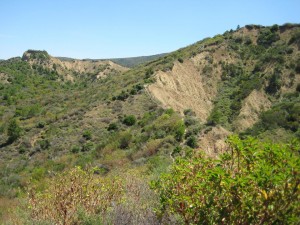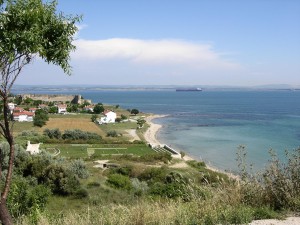To Step a Bit Closer
The Gallipoli Peninsula and the Great War
As the ezan begins in the distance, the phrases are caught by the next minaret and the two begin their lyrical rhythm. Like questions and answers following one another, a pause, a start, I listen as the call rolls gently through the morning. As I sit up from my welcome place of rest and look upon my bruised legs, from an earlier fall, I am eager – wondering what the day will bring. The challenges here are grand. The walks, each stride filled with the soft whispers of history.
From ridge to ridge we climb searching for the meaning in this place that yearns for us to visit here. We are tempted by its beauty to step a bit closer, to reach a bit higher, to take the next step, to see what is to be seen. We will learn that this was another people’s home, defended with the knowledge born unto them, for these are their hills, valleys, ravines and plateaus. Here upon the beaches, on these trails, scrambles, hills and ridges Australians and New Zealanders, British and French, Indians, the Newfoundlanders and other colonial troops came to fight in this incredible and difficult terrain. The logic that chose this ground is hard to fathom. Though these places are beautiful in this time of peace; as we wander about we find the violence, the cartridges, chargers, broken rum jars, and yes the bones of men that return to the surface.
As I face Lone Pine and other solemn grounds I cannot help but think of those who have come here before me, perhaps with the knowledge of a loved one having served, or yet, of another placed within these grounds that calls out ANZAC or Briton, French or Newfoundlander, Turk! Here is where, within ourselves, we hear the sounds of bugles, each note reminding us of recent ceremonies, soldiers, diggers, nations and earlier times.
Yet not all here is hills and ridges as I watch the carpet of golden wheat shimmer in the light, a great wave across this land that stretches to the horizon filled with trees. With our directed wanderings we harness what once was and what is, the beaches, this land, the life that scurries and flutters by, the crawlers, poppies, thorns, thistles and burs. As the sun finds each of us I regale in this heat, this history, this place. I have found meaning in these hikes, this silence, this observation. It has been a good day.
As night settles upon the land, and in the distance, the ezan begins its chorus.
Did you know?
The campaign in Gallipoli began April 25, 1915 and ended January 9, 1916. It was a decisive Turkish victory.
The Australian New Zealand Army Corps became known as the ANZACS. The origin of the term ANZAC is shrouded in mystery and the Australian War Memorial provides numerous suggestions. Please visit the Australian War Memorial website.
During the Battle of Gallipoli Mustafa Kemal was the divisional commander of the 19th Division and through his successes was given command of all Turkish forces. In 1923 he became the first president of the Republic of Turkey and in 1934 accepted the title of Atatürk (Father of the Turks). In 1934 he penned the following letter to an official delegation visiting ANZAC cove.
“Those heroes that shed their blood and lost their lives…You are now lying in the soil of a friendly country. Therefore rest in peace. There is no difference between the Johnnies and the Mehmets to us where they lie side by side here in this country of ours…You, the mothers, who sent their sons from faraway countries, wipe away your tears; Your sons are now lying in our bosom and are in peace after having lost their lives on this land. They have become our sons as well.”
The ezan (call to prayer) is heard six times a day.



Comments